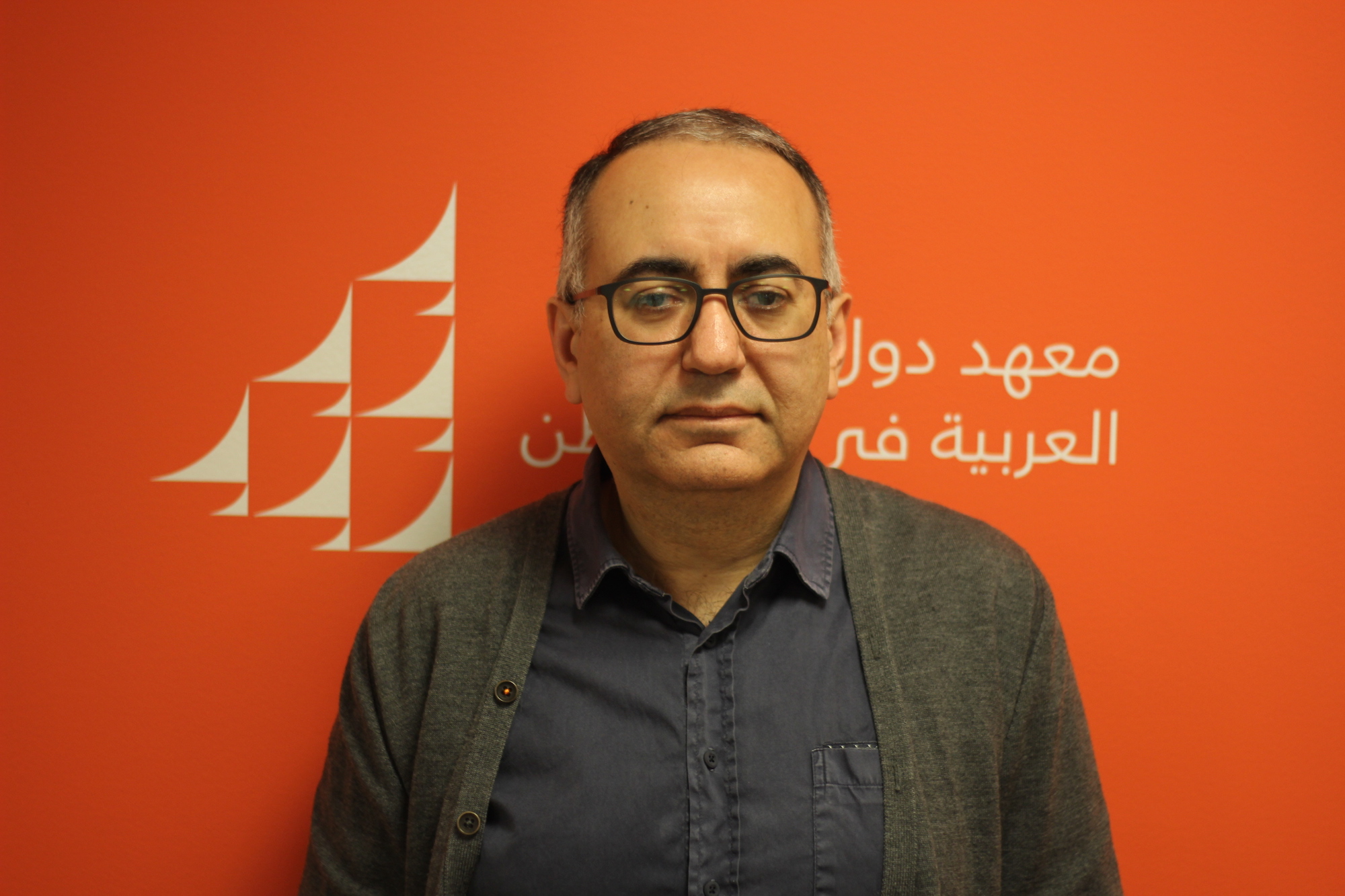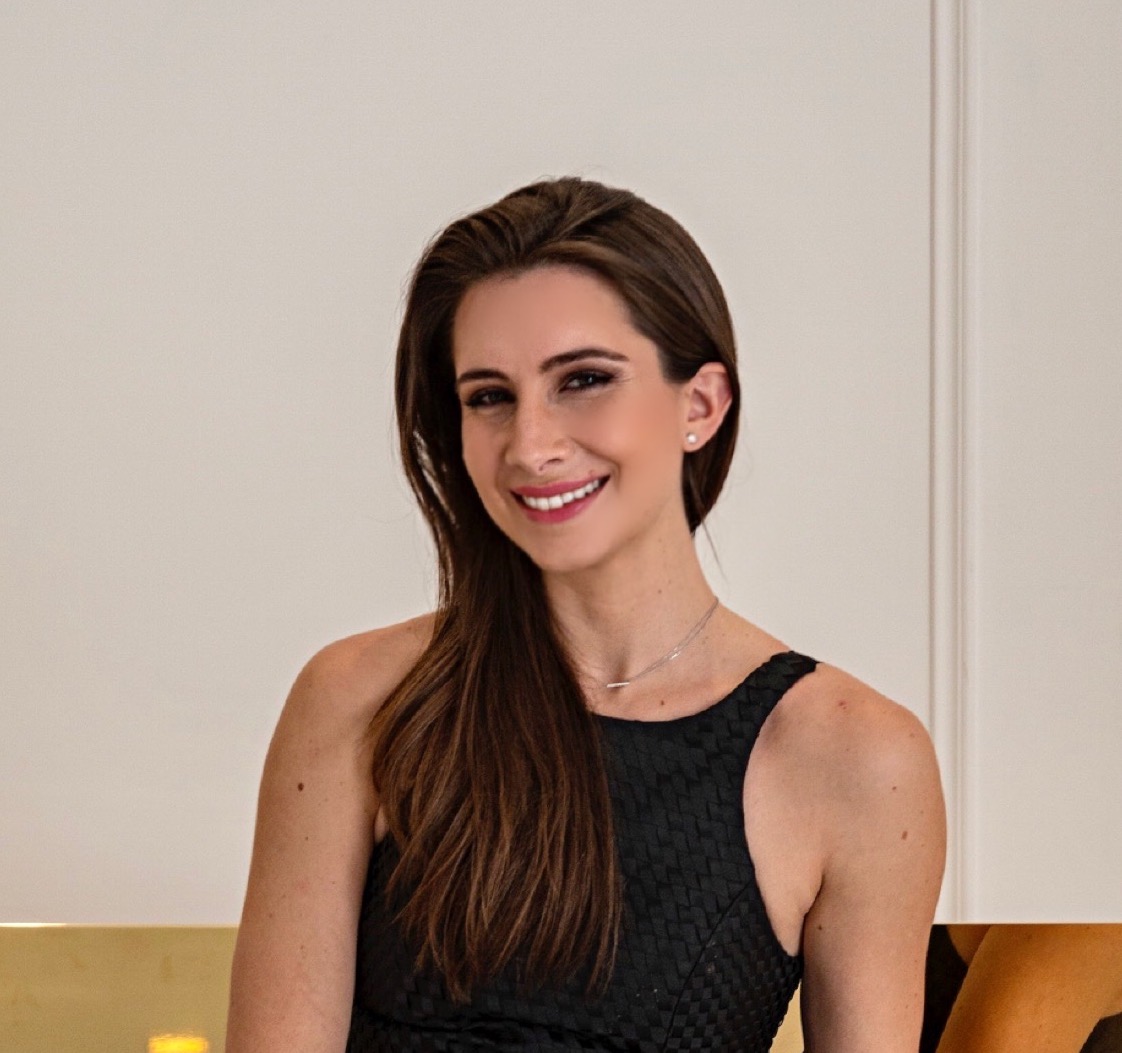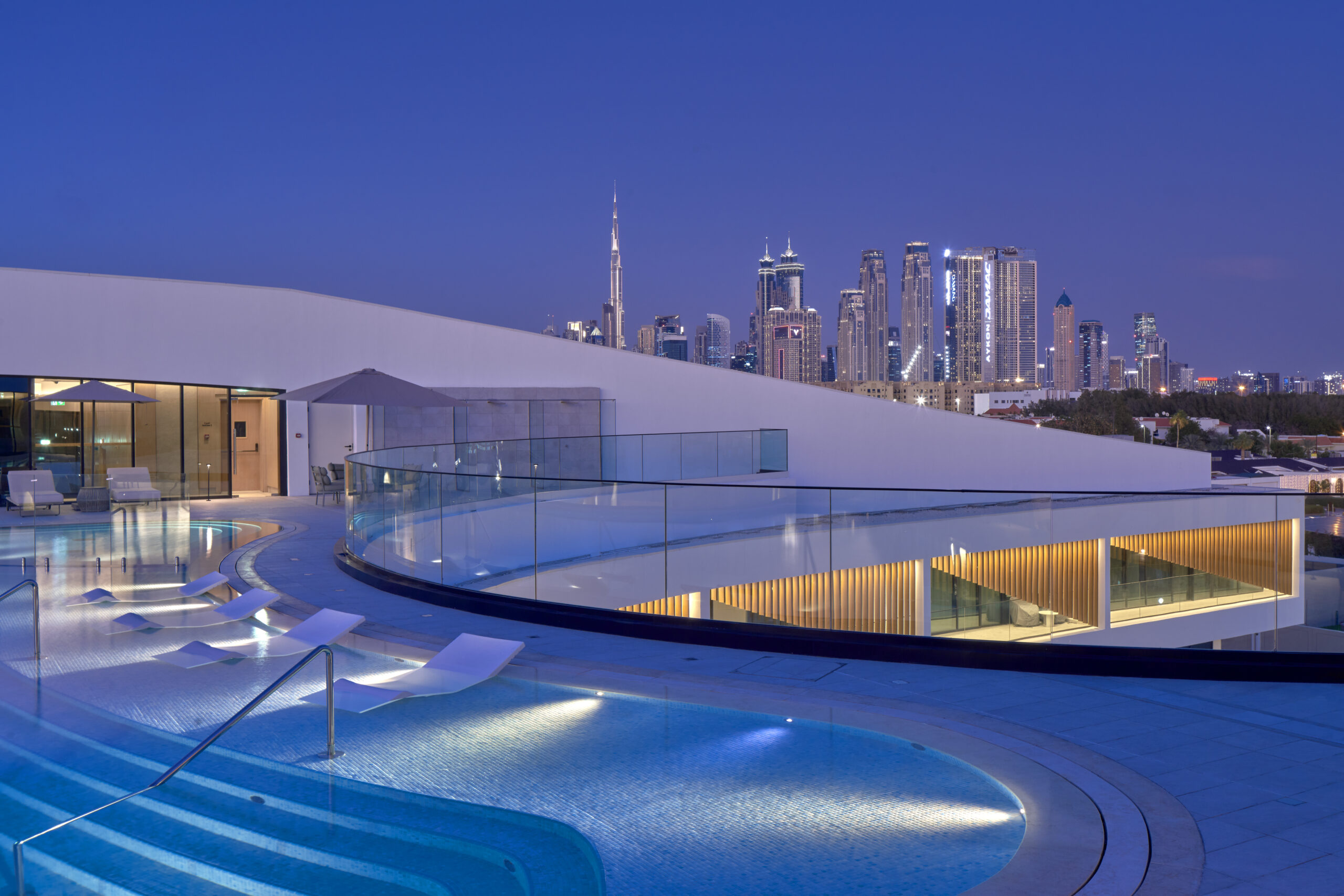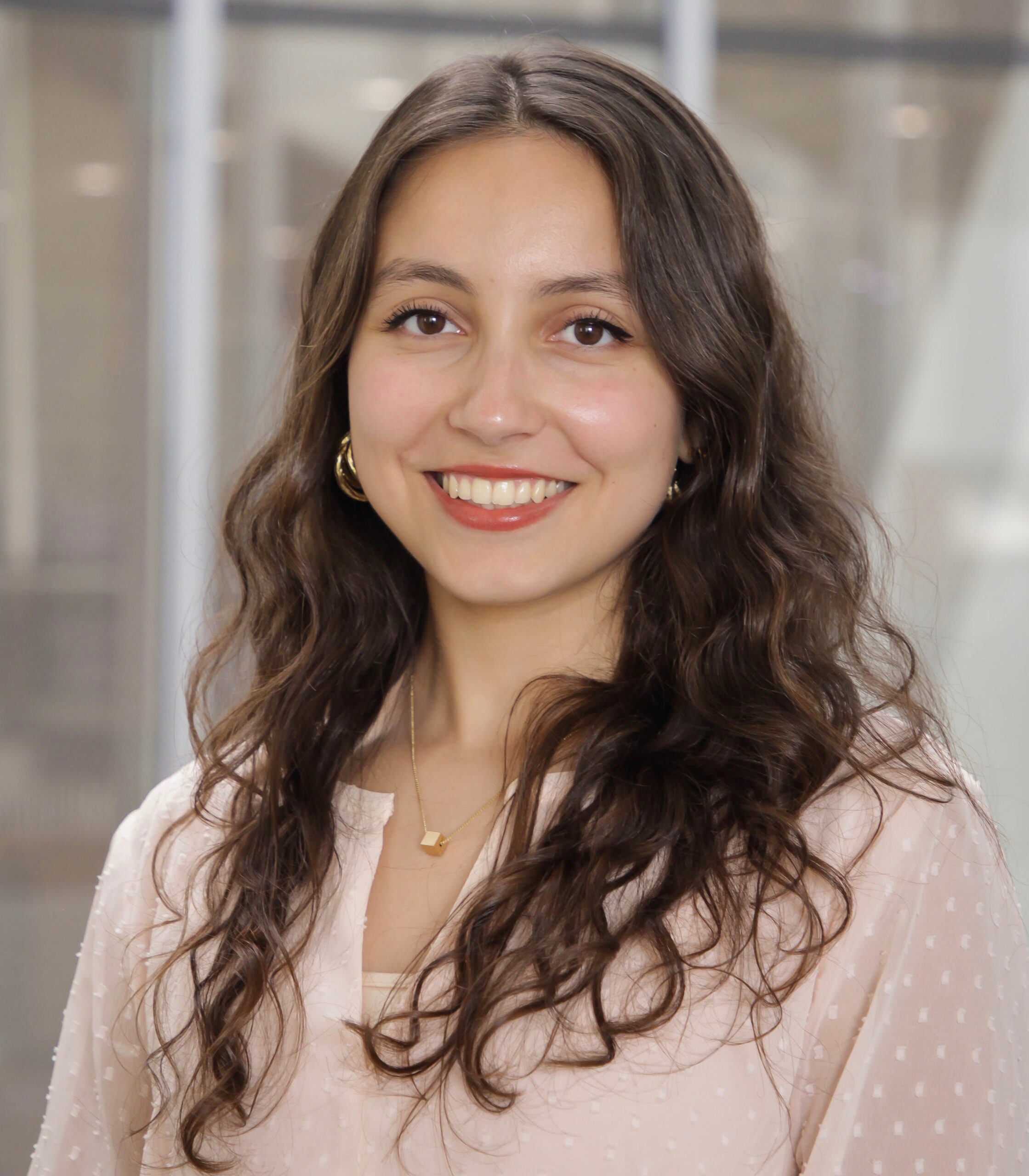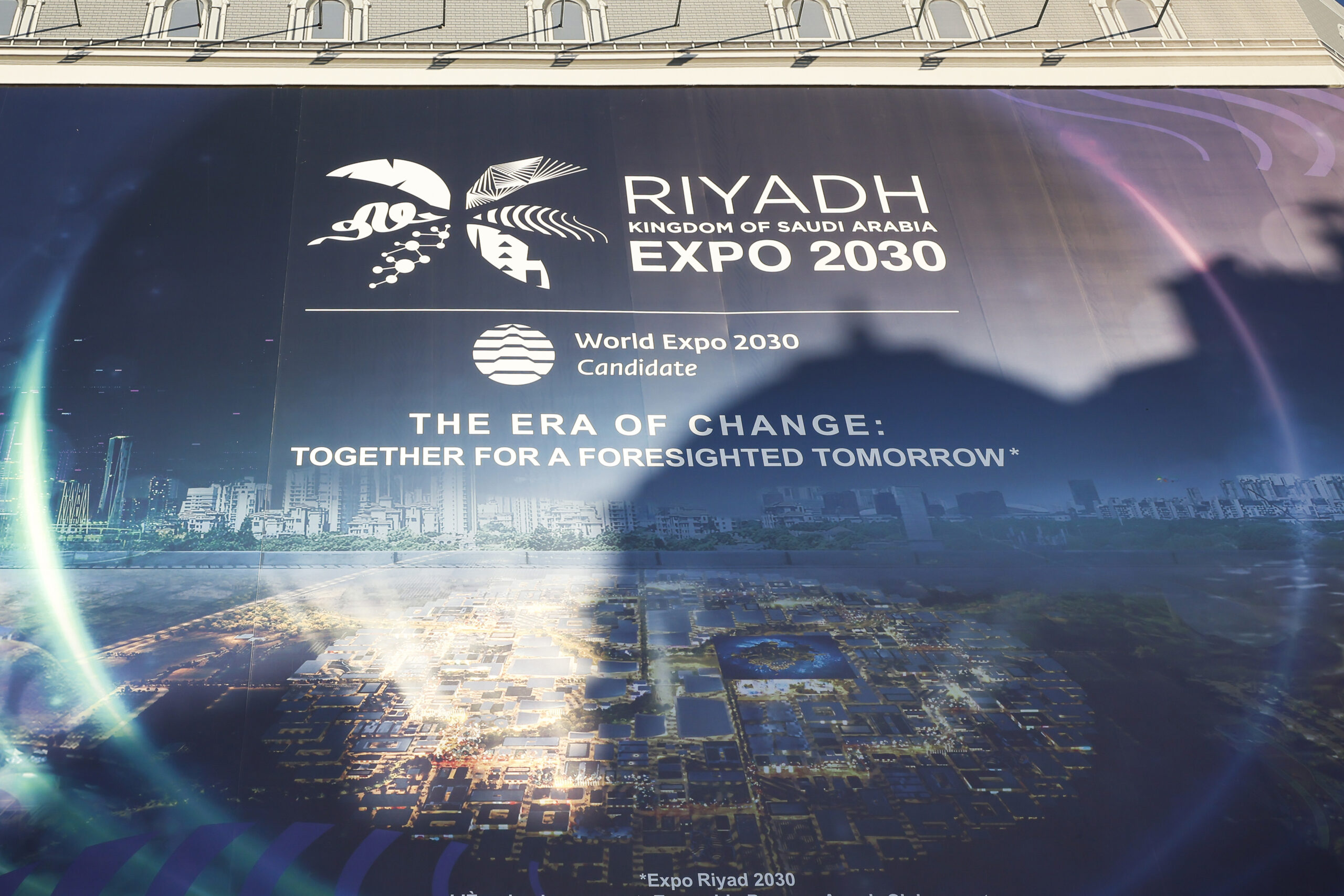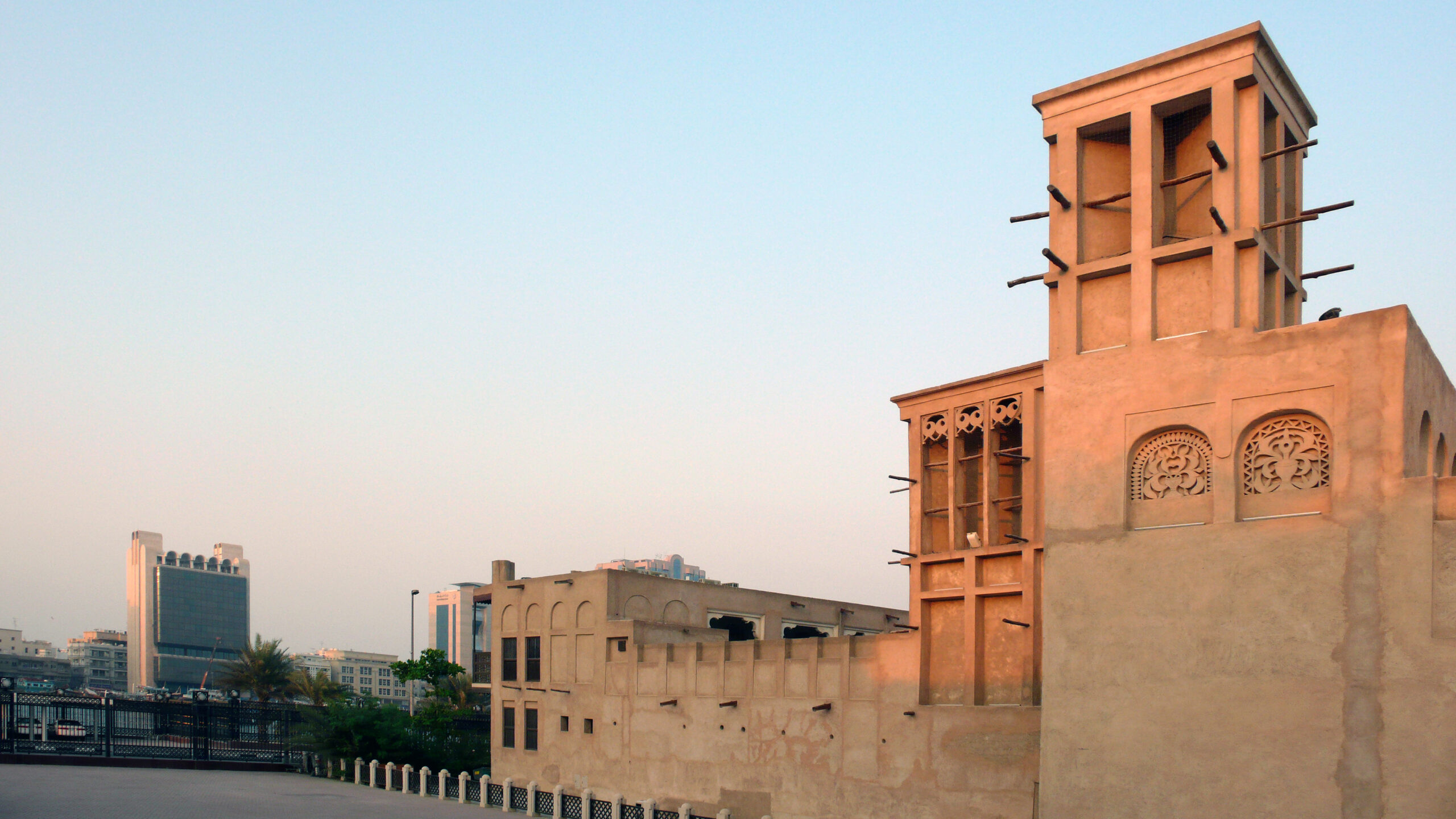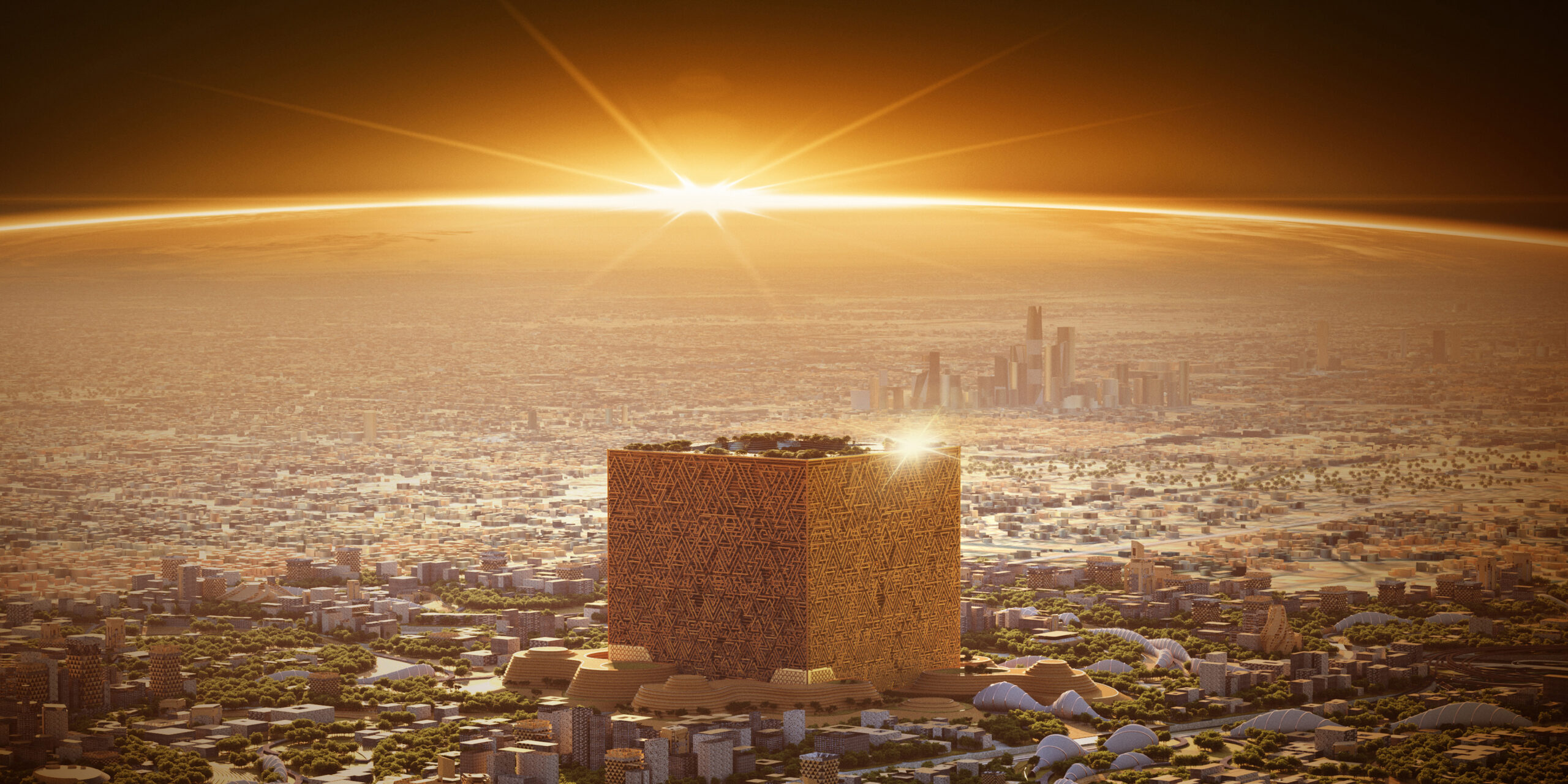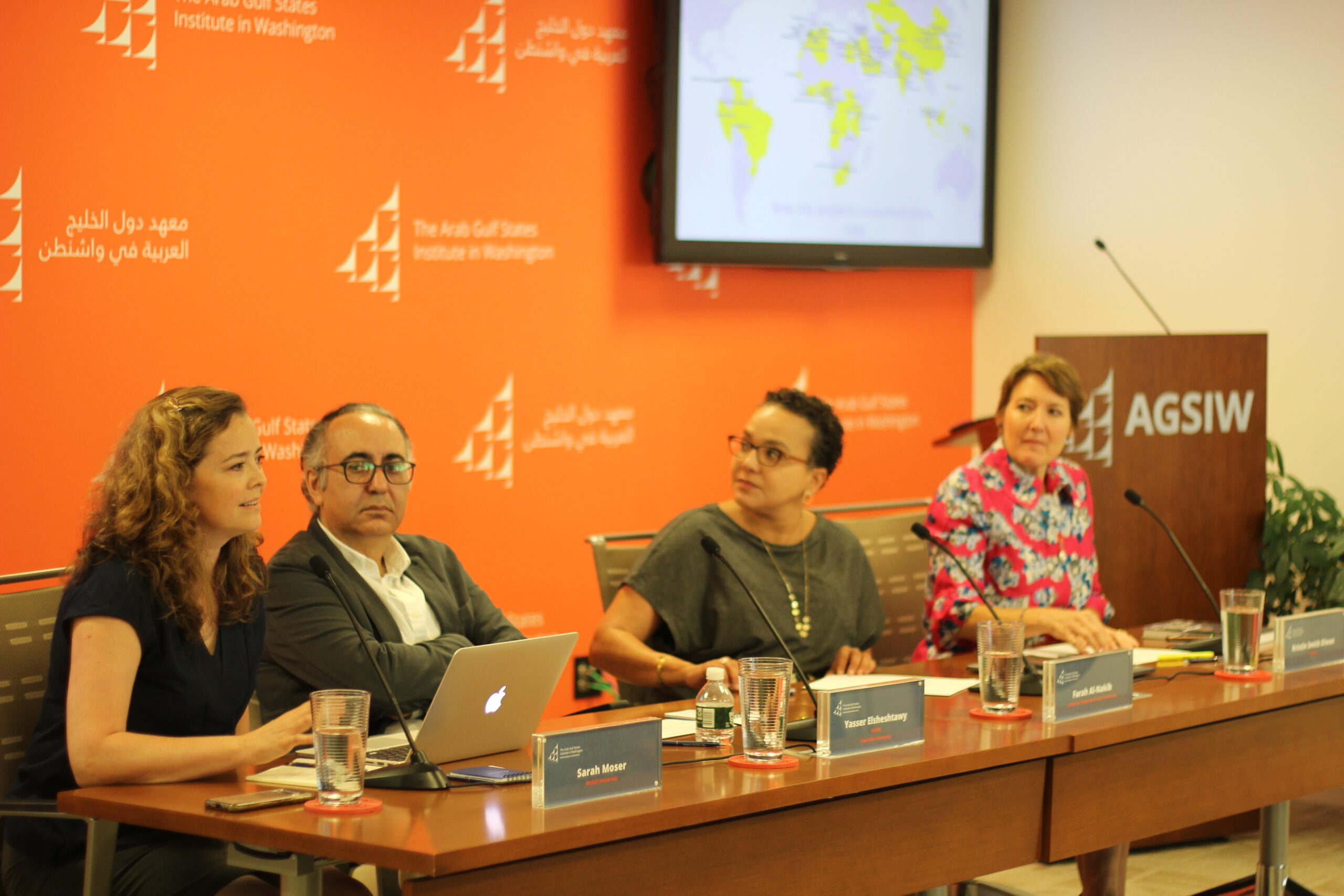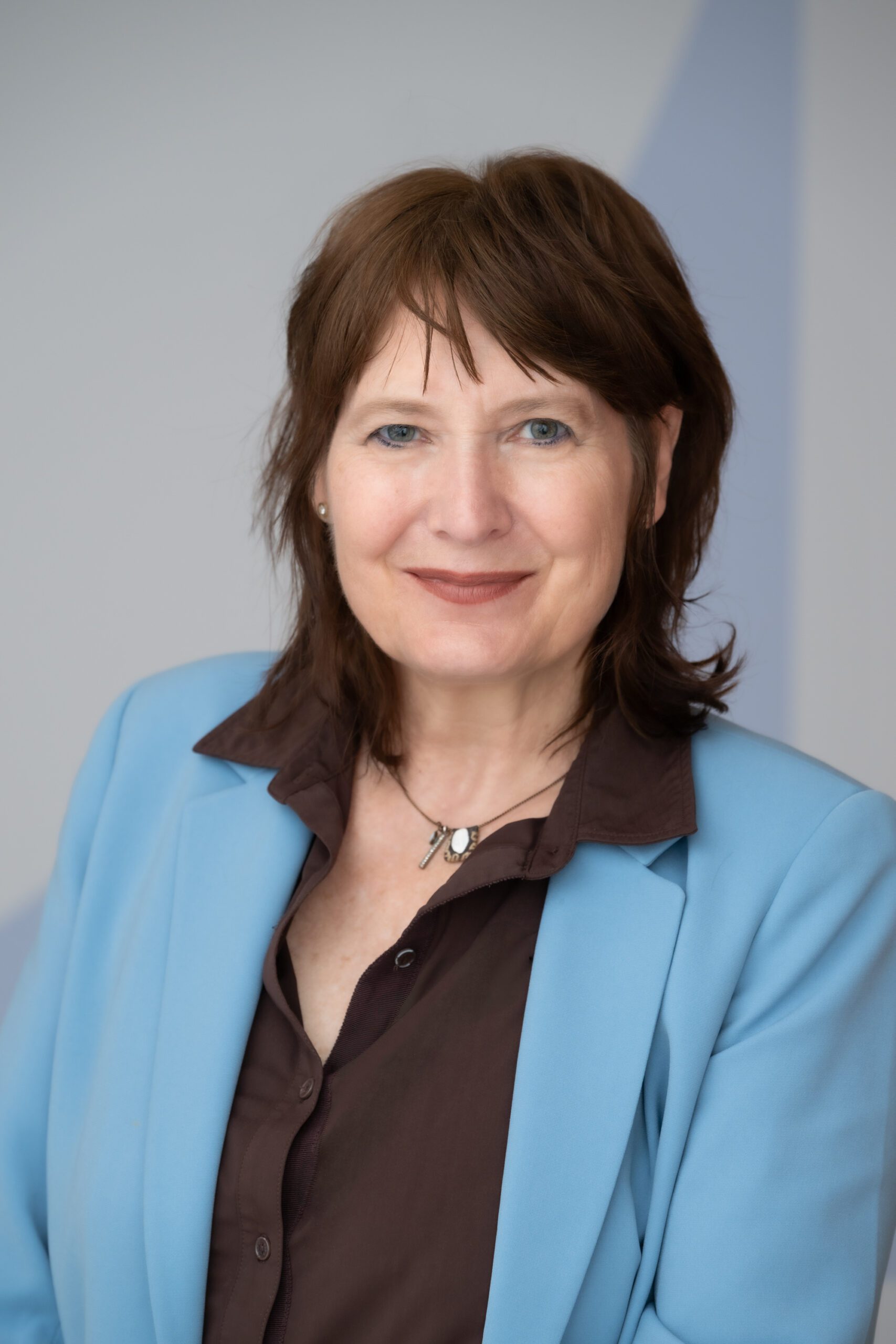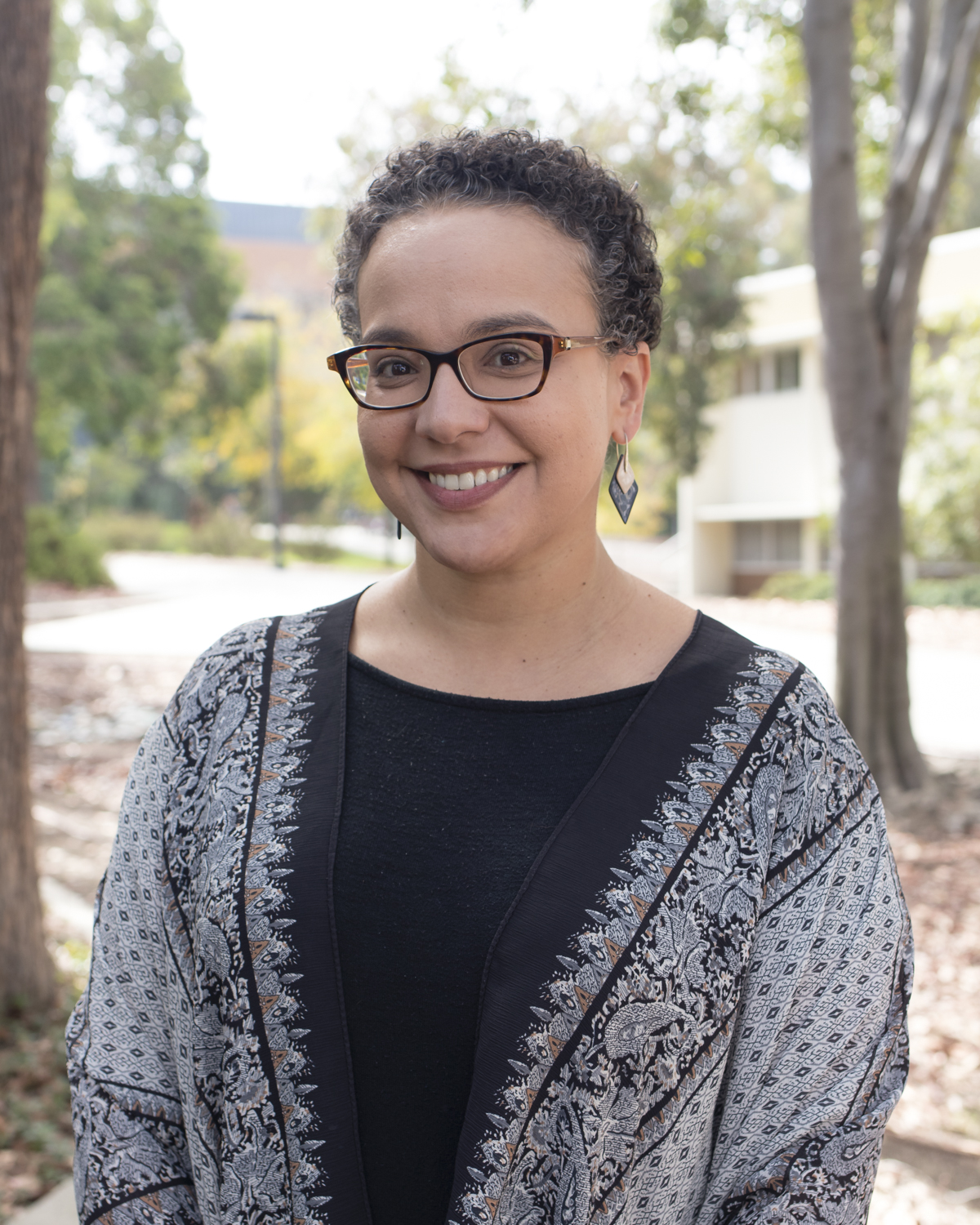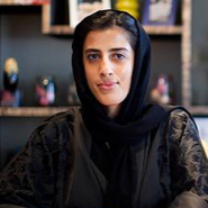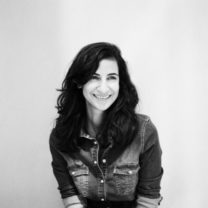Bahrain’s “Heatwave” and the Gulf’s Architectural Reckoning
Bahrain’s pavilion at the 2025 Venice Biennale of Architecture is emblematic of how Gulf states are leveraging architecture to address – or at least narrate – pressing environmental and social questions.
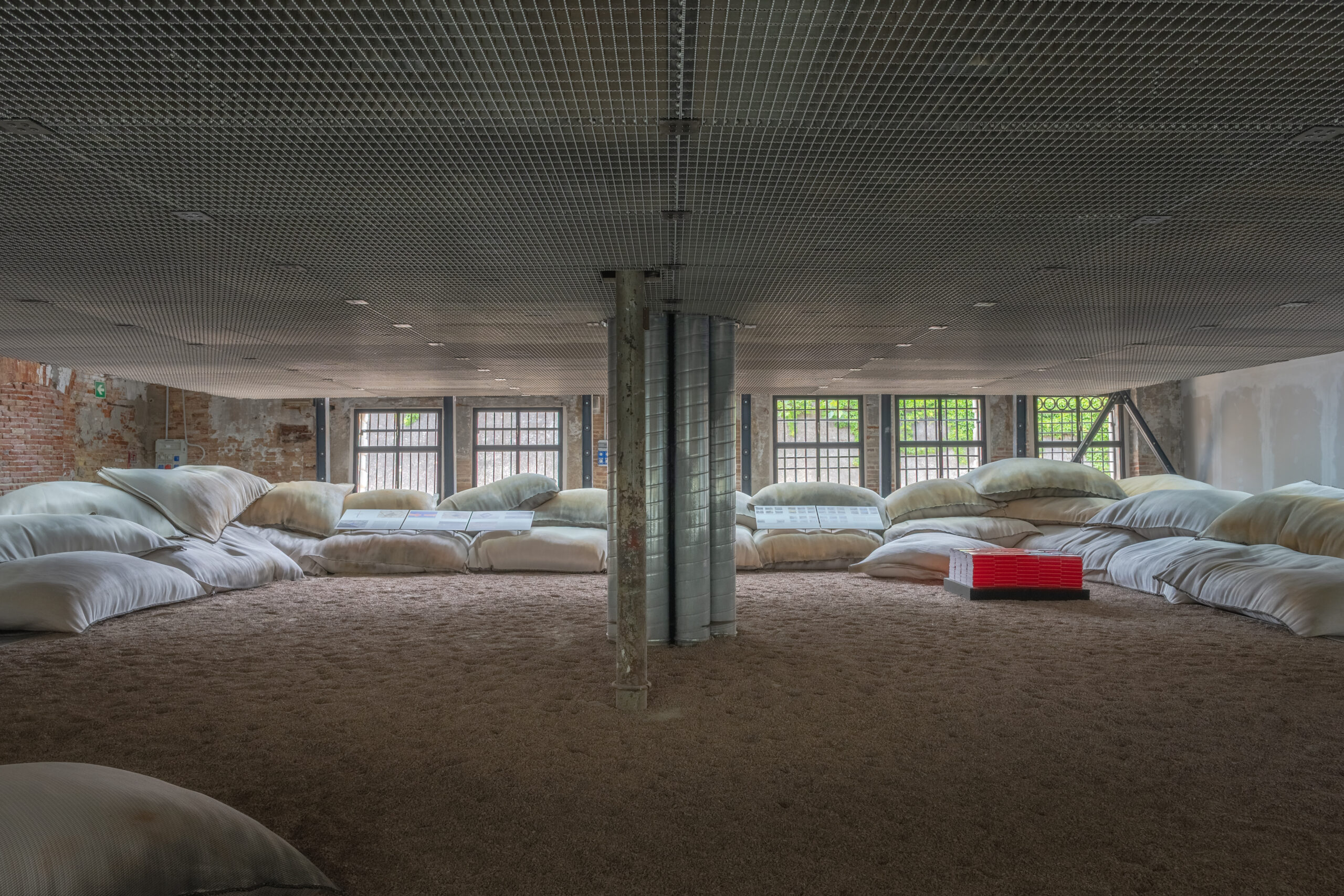
The 2025 Venice Biennale of Architecture, curated by Carlo Ratti under the theme “Intelligens: Natural. Artificial. Collective,“ challenged participants to interrogate the evolving relationship among technology, the environment, and human agency. Emphasizing architecture as a field increasingly shaped by ecological systems, computational intelligence, and collaborative networks, Ratti’s curatorial framework asked: How can communities design in ways that are both adaptive and equitable in the face of accelerating planetary change? Within this speculative landscape, Gulf Arab states’ national pavilions offer a range of responses – some embracing traditional knowledge, others projecting technological optimism. Bahrain’s “Heatwave,” which won the Golden Lion for Best National Pavillion, stands at the intersection of these issues: a climate-responsive prototype grounded in vernacular cooling techniques but also emblematic of the region’s broader attempts to reconcile environmental ambition with social and political concerns.
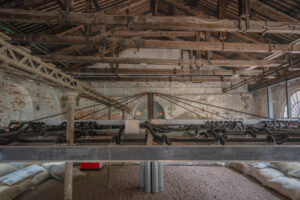
“Heatwave,” Bahrain pavilion, 2025 Venice Biennale of Architecture (Photo by Ishaq Madan, courtesy of Bahrain Authority for Culture and Antiquities)
Bahrain’s pavilion is part of a broader shift in how Gulf Arab states are leveraging architecture to address – or at least narrate – pressing environmental and social questions. Framed as an urgent yet poetic response to extreme heat, “Heatwave” advances a vocabulary of modular platforms, raised canopies, and passive cooling strategies rooted in traditional Bahraini architecture. But beyond its technical sophistication and articulate design, the pavilion’s political and ethical stakes demand closer interrogation – particularly in comparison with its regional counterparts from Saudi Arabia, the United Arab Emirates, Qatar, Kuwait, and Oman.
Curated by Andrea Faraguna and commissioned by Khalifa bin Ahmed al- Khalifa, “Heatwave” proposes an architectural language attuned to the experience of heat as an embodied condition, especially among those who have to inhabit outdoor spaces – namely laborers and low-income workers. Drawing inspiration from wind towers, shaded courtyards, and local material systems, the pavilion positions itself as a climate-responsive prototype and a platform for rethinking “thermal commons” – namely shared spaces, resources, practices, and knowledge related to thermal comfort within a community, in short shared civic infrastructure. The structure is at once minimal and affective – a reminder of how modernism once promised social equity through spatial design. But to what extent can such an elegant gesture intervene in systems that produce environmental and social precarity in the first place?
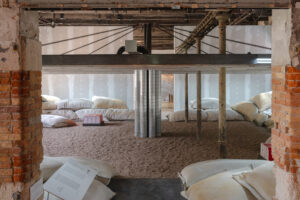
“Heatwave,” Bahrain pavilion, 2025 Venice Biennale of Architecture (Photo by Ishaq Madan, courtesy of Bahrain Authority for Culture and Antiquities)
“Heatwave” is among the few Gulf pavilions that embody realities of extreme heat and the lived experiences of vulnerable workers. Yet some danger may lie in precisely this framing – where the sometimes lethal intensity of climate is abstracted into a universal design problem. For decades, like other Gulf countries, Bahrain has relied on South Asian migrant laborers to build and maintain its urban infrastructure. Many of these laborers work outdoors in summer, often with little protection or oversight. However, Bahrain’s official policy prohibits outdoor work in direct sunlight from midday to late afternoon during the hottest months – from June 15 to September 15, between 12 pm and 4 pm. The policy applies primarily to traditional field laborers, carries substantial fines and criminal penalties for violations, and is enforced through active inspections. But, according to numerous Bahraini media reports, the policy is limited in scope and does not account for real-time heat conditions – prompting calls for broader coverage and climate-responsive measures. Considering this context, “Heatwave” risks appearing as a symbolic balm – an aesthetic resolution to a much deeper structural issue.
Other Gulf national pavilions engage with similarly urgent themes. Saudi Arabia’s “The Um Slaim School,” curated by Beatrice Leanza and presented by Syn Architects, focuses on the study of traditional Najdi vernacular forms. The exhibition space is a “living archive” that celebrates tradition and community learning. Despite its ambition, the Saudi pavilion leans heavily on representation rather than spatial engagement, raising questions about whether architecture can function as a form of pedagogy without actual construction. Moreover, its reliance on antiquated notions of heritage and history does not offer a solution to the concerns posed by the biennale’s theme – instead, it is nostalgic and romanticized. In contrast to Bahrain’s tactile prototype, Saudi Arabia offers a discursive platform – valuable in itself but less grounded in the material reality of urban transformation.
The UAE’s “Pressure Cooker,” curated by Azza Aboualam, centers on food security and greenhouse design in arid contexts. It showcases modular “kit-of-parts” structures for localized agriculture and offers an alternative narrative to the resource-extractive history of Gulf development. Its architectural “cookbook” format is inventive, but its speculative nature – like many research-led exhibitions – is difficult to assess without implementation. Unlike “Heatwave,” which confronts heat as a spatial and civic problem, “Pressure Cooker” frames food production as a systems question, somewhat detached from questions of equity and access.
Qatar’s debut pavilion, “Beyti Beytak” (“My House Is Your House”), plays with hospitality as an architectural and cultural trope. With installations ranging from Yasmeen Lari’s bamboo “Community Centre” to archival explorations of Middle East and North African architecture, Qatar’s pavilion functions more as cultural diplomacy than architectural critique. While its ambition to represent multiple geographies and generations is admirable, its use of hospitality – serving dates and coffee, invoking the mashrabiya (wooden screen windows) – occasionally seems performative. Unlike Bahrain’s “Heatwave,” which is modest in scale but radical in implication, Qatar’s offering is expansive and curated to impress – a mirror of its wider cultural strategies in Doha and beyond.
Kuwait’s “Kaynuna” (“Being”), meanwhile, provides the most introspective reflection on modernization. Led by Abdulaziz al-Mazeedi and a team of young designers, the pavilion critiques the demolition-driven ethos of Kuwait’s urban policies. It proposes alternative frameworks that bridge memory, identity, and material sustainability. Among all the Gulf pavilions, “Kaynuna” comes closest to Bahrain’s pavilion in its willingness to confront the erasures of state-led development. Yet where Bahrain responds with architectural form, Kuwait uses speculative drawings and conceptual installations.
“Traces” is Oman’s Venice Biennale of Architecture debut. It focuses on the sablah, a traditional gathering space. The pavilion’s material choices – woven palm, modular seating, and pottery-inspired structures – articulate a vision of architecture as continuity rather than rupture. While modest compared to the other Gulf contributions, it is also the most grounded. In comparison to “Heatwave,” “Traces” offers a quieter meditation on climate, community, and temporality.
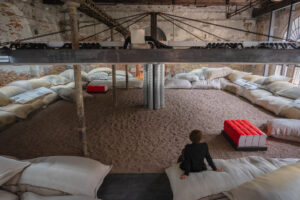
“Heatwave,” Bahrain pavilion, 2025 Venice Biennale of Architecture (Photo by Ishaq Madan, courtesy of Bahrain Authority for Culture and Antiquities)
Bahrain’s “Heatwave” has distinguished itself not only by winning the Golden Lion for Best National Pavilion but by grounding environmental design in spatial and political urgency. Its invocation of the “thermal commons” is an important intervention in architectural discourse, particularly at a time when climate response is often reduced to technical solutions that do not directly address social concerns. But its real legacy will depend on what happens after Venice. Will its modular design be replicated in schoolyards, labor sites, and bus stations in Manama? Or will it become yet another speculative gesture consigned to the archives of biennale architecture? To avoid that fate, Bahrain must move beyond the aesthetics of care and confront the deeper structures that perpetuate thermal inequality. Architecture, after all, is not just about shelter or cooling – it is about who gets to inhabit space with dignity. In that regard, “Heatwave” is not an answer but a provocation. And perhaps that is precisely why it matters.
The views represented herein are the author's or speaker's own and do not necessarily reflect the views of AGSI, its staff, or its board of directors.
